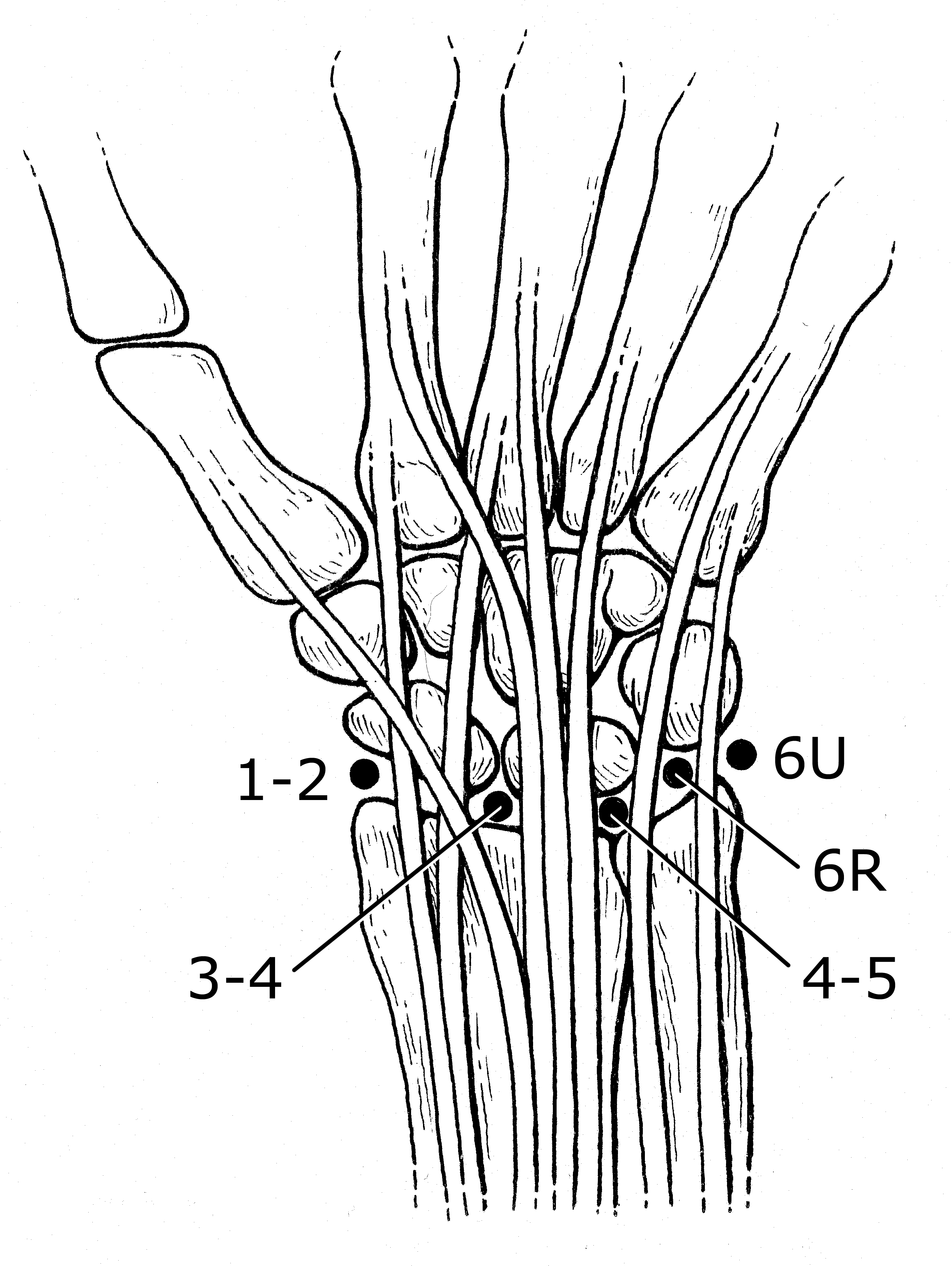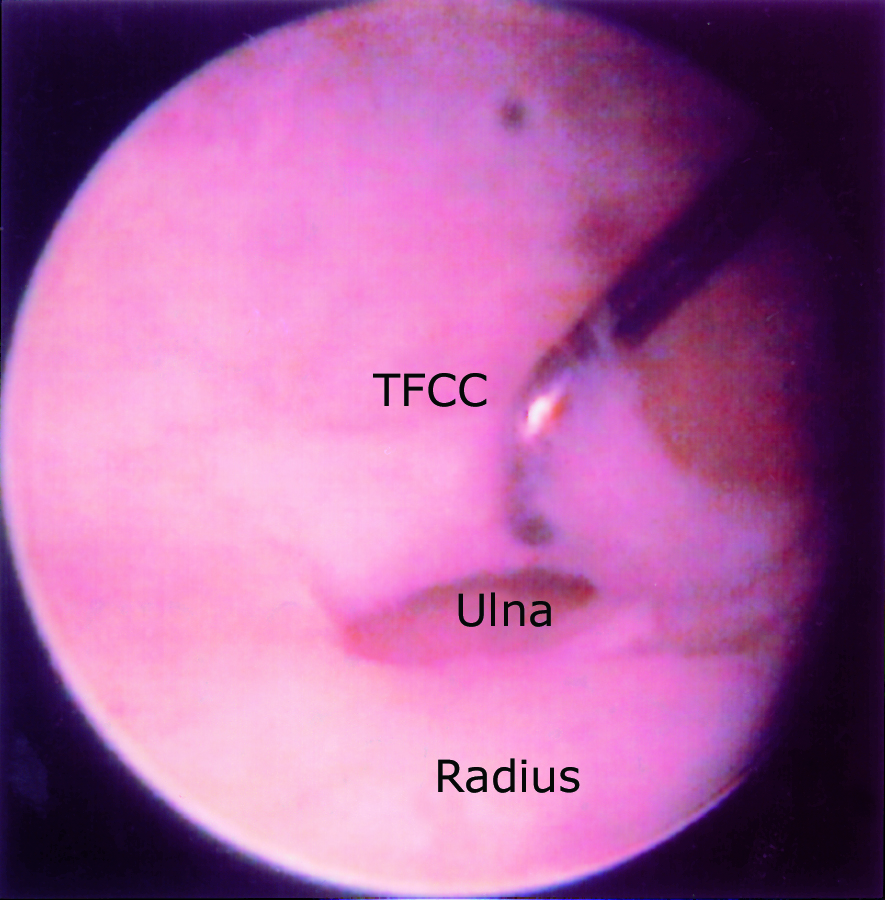Treatment
Wrist Arthroscopy
Arthroscopy is a surgical procedure used to diagnose and treat problems inside a joint.
Arthroscopy uses a small, fiber optic camera called an arthroscope that enables the surgeon to see inside the joint — and identify any problems — through a small incision, or portal.
The arthroscope, which is approximately the size of a pencil (or even thinner in some cases), contains:
- A small lens
- A miniature camera
- A lighting system
Typically, the surgeon makes one or more separate small incisions to insert specialized tools, including probes, graspers, and shavers, into the wrist to treat any conditions they identify with the arthroscope.
The wrist is a complex joint with eight small bones and many connecting ligaments. Arthroscopic surgery can be used to diagnose and treat a number of conditions of the wrist, including:
- Chronic wrist pain
- Ganglion cysts
- Ligament tears (wrist sprains)
- Wrist fractures
Description
Before wrist arthroscopy, your doctor will do the following:
- Perform a physical examination of the hand and wrist.
- Learn more about past medical conditions or concerns (medical history).
- Perform tests that attempt to locate the pain/symptoms (provocative tests).
- Obtain images of the hand and wrist. These may include X-rays, magnetic resonance imaging (MRI) scans, or an arthrogram (an X-ray or MRI taken after a dye is injected into the joint).
During wrist arthroscopy:
- Usually, arthroscopic surgery requires only that the hand and arm are numbed (regional anesthesia). A sedative may also be given to further relax the patient.
- The surgeon will usually use a traction device to apply sustained tension across the wrist to widen the joints and make it easier to insert the arthroscope.
- The surgeon makes small incisions (portals) through the skin in specific locations around the joint and inserts the arthroscope. During the procedure, the wrist is usually filled with saline (using a pump) to help with visualization.
- Once the arthroscope is in place, images of the joint are projected through the camera onto a monitor in the operating room. The surgeon watches the monitor as they move the arthroscope within the joint.
- As mentioned above, in addition to the arthroscope, several specialized tools are placed into the wrist through other portals. These tools are used to correct problems uncovered by the surgeon during the procedure.
Diagnostic Arthroscopy
Diagnostic arthroscopy refers to using the arthroscope to look for issues in the joint that might be causing symptoms.
Diagnostic arthroscopy of the wrist might be used:
- If it is not clear what is causing wrist pain based on physical exam, X-rays, MRI scans, or other tests.
- If wrist pain continues for several months despite nonsurgical treatment.
If issues with the wrist are discovered during a diagnostic arthroscopy, they can often be addressed at that time, instead of requiring a separate surgery at a later date.
After the surgery, the surgeon closes each incision with a small stitch and applies a dressing. Sometimes, a splint is used after surgery.
Arthroscopic Surgical Treatment
Arthroscopic surgery can be used to treat a number of conditions of the wrist, including, but not limited to:
- Chronic wrist pain. Arthroscopic exploratory surgery may be used to diagnose the cause of chronic wrist pain when the results of other tests do not provide a clear dianosis. Often, there may be areas of inflammation, cartilage damage, or other findings that explain the pain. In some cases, after the diagnosis is made, the condition can be treated arthroscopically as well — and possibly during the same procedure.
- Wrist fractures. Small fragments of bone may stay within the joint after a bone breaks (fractures). Wrist arthroscopy can be used to remove these fragments and align the broken pieces of bone. The bone is then stabilized using pins, wires, screws, plates, etc.
- Ganglion cysts. Ganglion cysts commonly grow out of the joint from a stalk between two of the wrist bones. Commonly, the cyst and/or its stalk can be seen and removed during arthroscopy, eliminating the cyst.
- Ligament/triangular fibrocartilage complex (TFCC) tears. Ligaments are fibrous bands of connective tissue that connect bones to each other. They provide stability and support to the joints. The TFCC is a structure that both stabilizes and cushions the wrist. A fall on an outstretched hand (e.g., from slipping on an icy surface, or while playing sports) can injure or tear ligaments in the wrist, such as the TFCC. This may cause wrist pain and/or clicking, especially during activity. Arthroscopic surgery can be used to diagnose and treat TFCC and other ligament tears of the wrist.
After Surgery
- For the first 2 or 3 days after surgery, the wrist should be elevated, and the bandage should be kept clean and dry.
- Ice may help keep swelling down.
- There are exercises that can be used to help maintain motion and rebuild your strength.
- Although pain after surgery is usually mild, analgesic medications will help relieve any pain. Your surgeon will go into more detail about the appropriate post-operative pain relief protocol for your particular surgery.
Complications
Complications during or after arthroscopic wrist surgery are unusual. They may include:
- Infection
- Nerve injuries
- Excessive swelling
- Bleeding
- Scarring
- Tendon tearing
Your doctor will discuss the complications of arthroscopy with you before your surgery.
Outcomes
The outcomes of a wrist arthroscopy depends on the condition that is identified during the procedure. However, the majority of wrist arthroscopy cases are successful in helping with diagnosis and treatment of wrist conditions.
Contributed and/or Updated by
Peer-Reviewed by
AAOS does not endorse any treatments, procedures, products, or physicians referenced herein. This information is provided as an educational service and is not intended to serve as medical advice. Anyone seeking specific orthopaedic advice or assistance should consult his or her orthopaedic surgeon, or locate one in your area through the AAOS Find an Orthopaedist program on this website.









